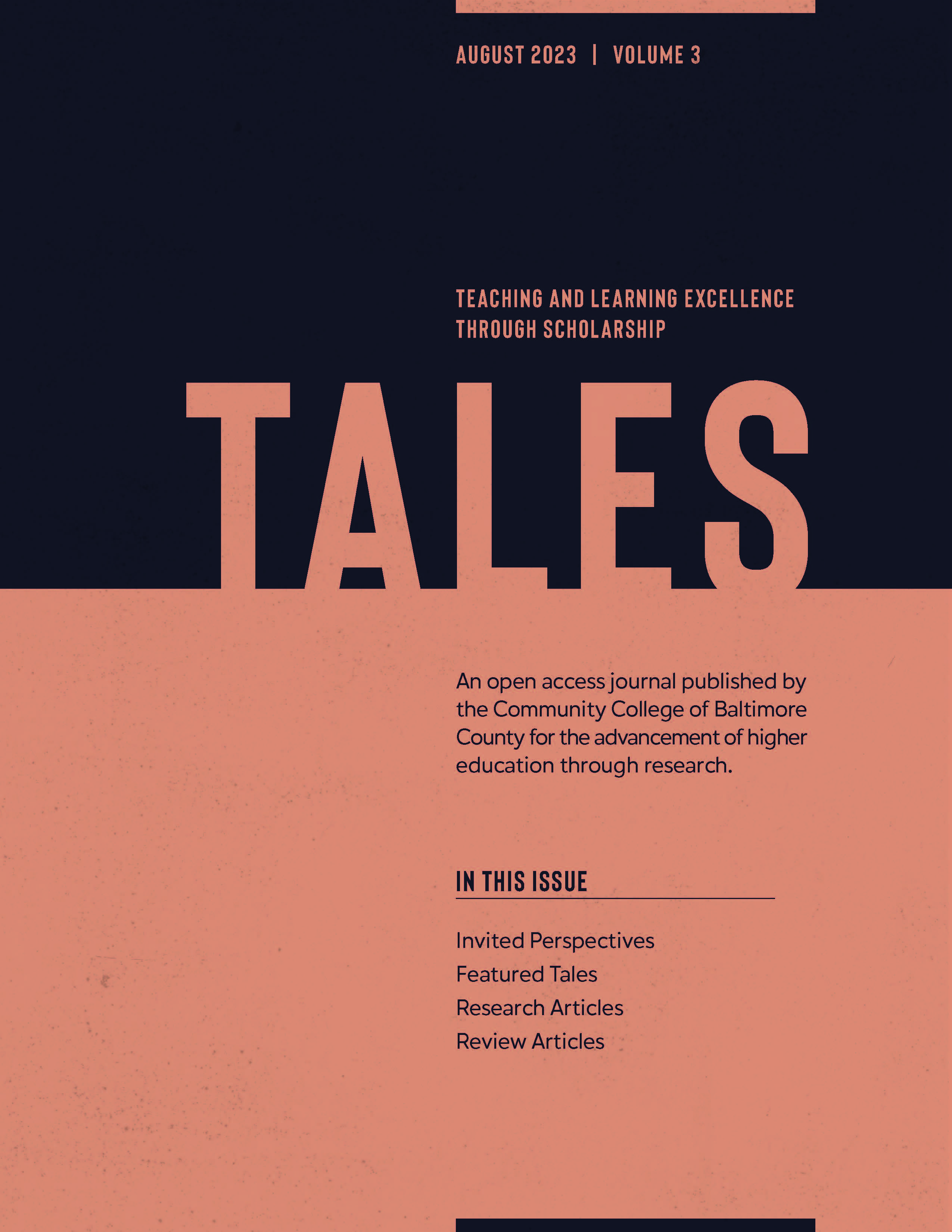A Community College Case Study on Curricular Maps and Student Retention
DOI:
https://doi.org/10.52938/tales.v3i1.2889Abstract
To understand retention, evaluation of guided pathways (GP) implementation is an important tool. In an effort to help students succeed, colleges often give students a specified set of core courses and a specific or even prescribed pathway to complete their general education requirements. Retention efforts are always a topic with administrators at community colleges across the United States. The Community College of Baltimore County (CCBC) incorporated GP into retention efforts in the fall of 2015. Over the past 4 years, CCBC has incorporated more activities focusing on increasing knowledge about GP. The pathways are Arts; Business, Law and Education; General Studies; Humanities and Social Sciences; Science and Health Careers; and Technology, Engineering and Mathematics. Vincent Tinto’s framework is often presumed to be inappropriate to the study of student persistence at community colleges because social integration is considered unlikely to occur for students at these institutions. Community college students are thought to not have the time to participate in activities like attending concerts, joining clubs, or exploring art galleries that would facilitate social integration. This study examines student and faculty perceptions of GP at CCBC and whether they help with retention of the students for sequential semesters. I interviewed students who were enrolled in English 101 for the first time starting in the fall of 2015 through 2018. I also interviewed full-time faculty who taught English 101 on the same campus.


